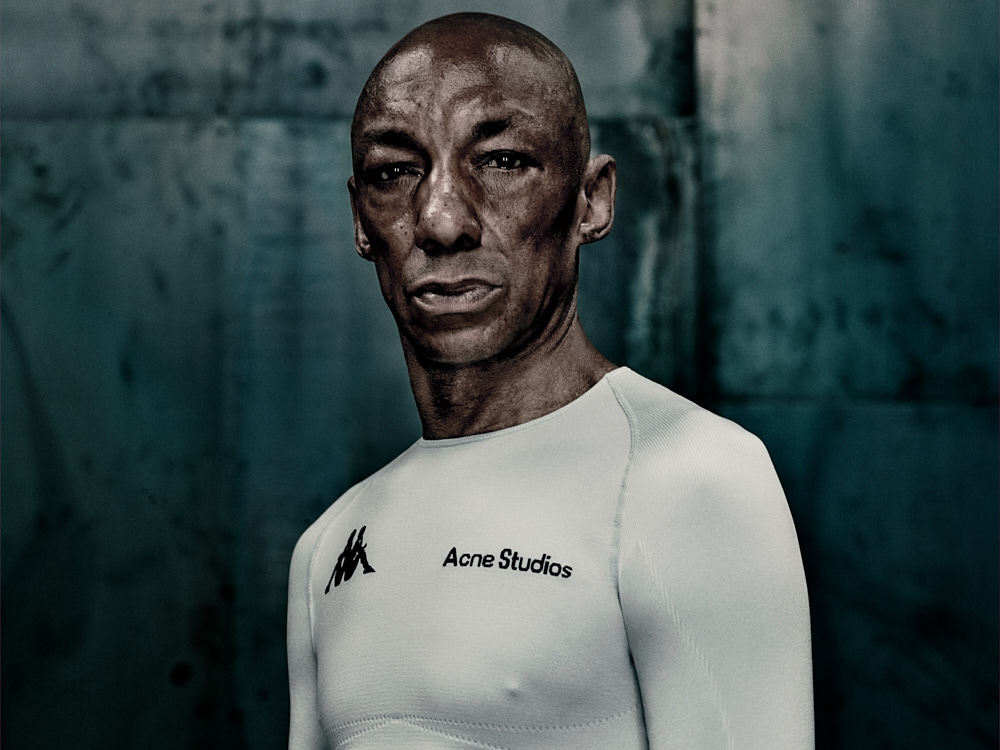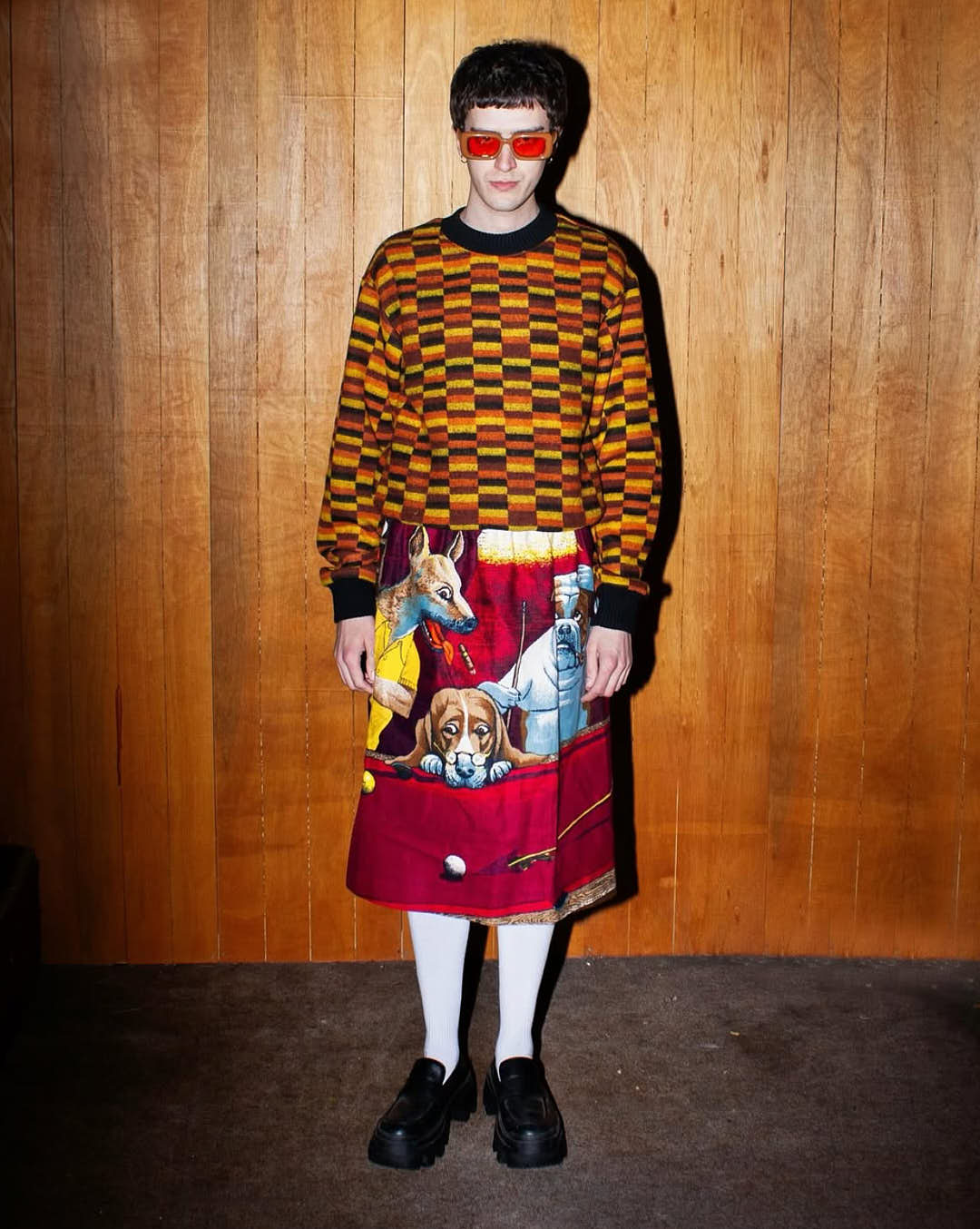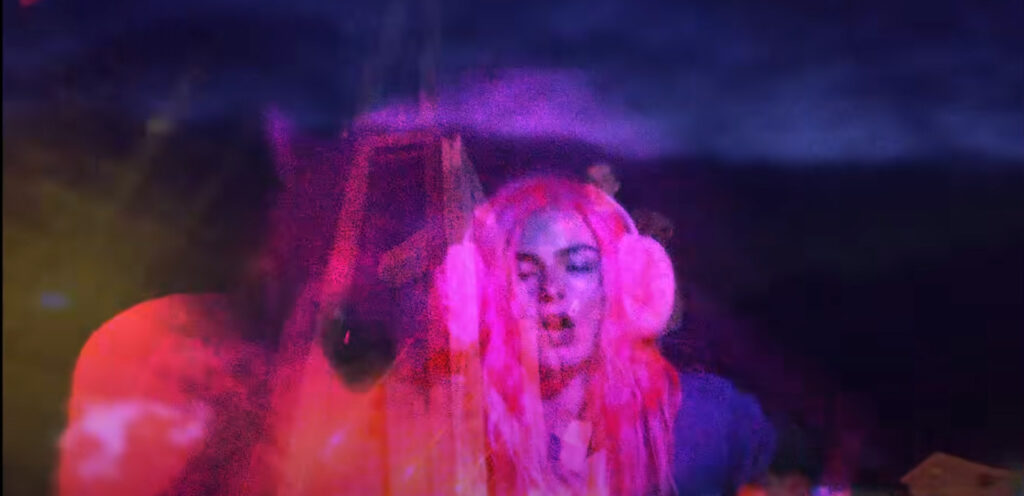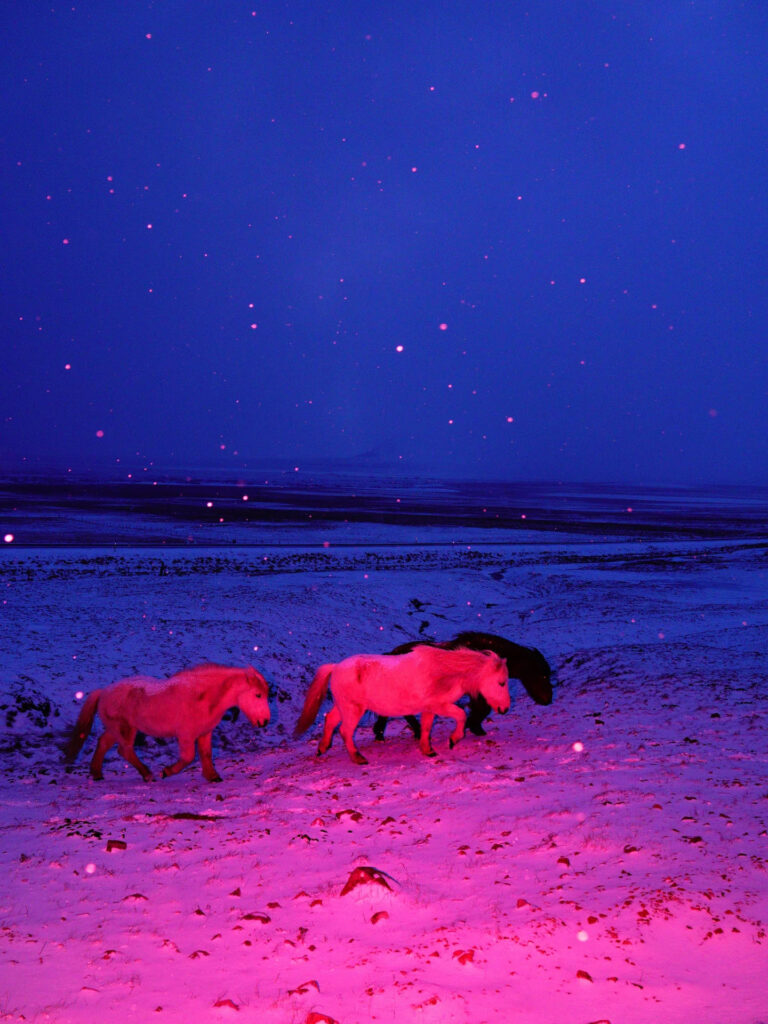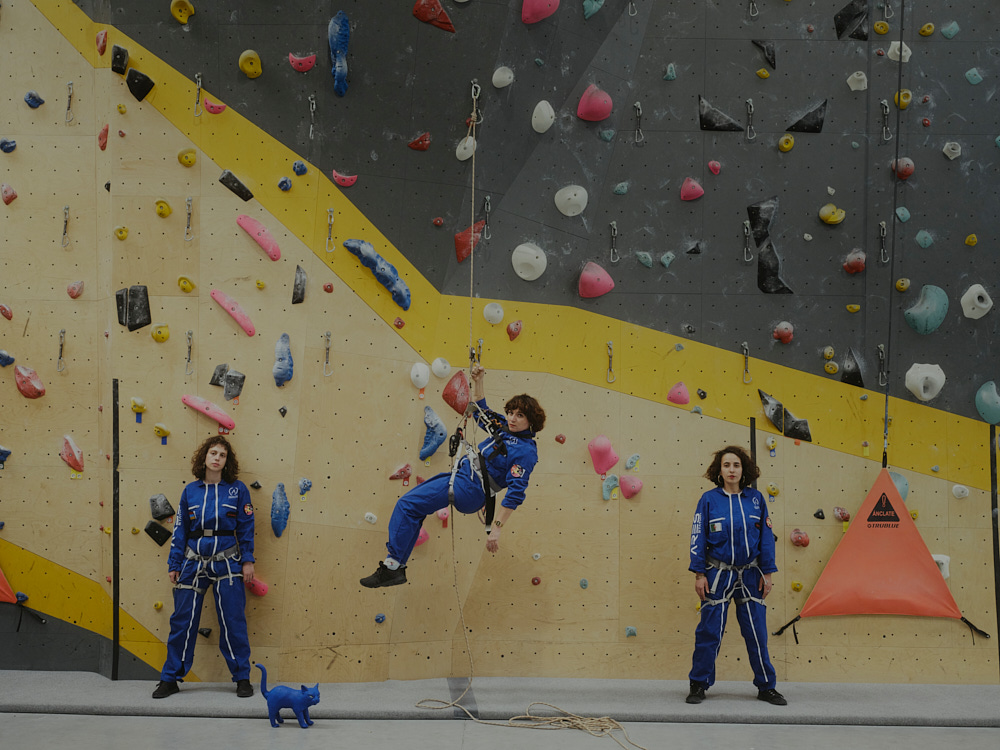
Madness as Method: Activism, Collective Memory, and Space Exploration in Nelly Ben Hayoun-Stépanian’s Doppelgängers3
Written by Joshua Beutum
Dr Nelly Ben Hayoun-Stépanian and two doppelgängers land on the moon. This is the creative experiment at the centre of her newest documentary, Doppelgängers3, which sees the award-winning designer of experiences venture into the depths of a Spanish cave to reflect on humanity’s expansion into the universe.
But what she delivers is a far cry from what we’re used to seeing in the genre—there’s no Elon Musk-style odes to interplanetary colonisation, nor celebrations of the just-for-fun adventures of Katy Perry and her crowd of Bezos-backed ‘astronauts’. Instead, what Doppelgängers3 uncovers is a post-humanist perspective that offers a viable—if broadly defined—alternative to these neo-colonial and capitalist frameworks.
Underneath a psychedelic-punk-meets-alien aesthetic, much of the film is underscored by the recurring idea that madness—or imagination—is essential to how we discuss space. As political scientist Uday Mehta says, “Think of the Moon as a place where madness is permitted… [where] people can live their lives unconstrained by their imaginations.” To achieve a new vision of space exploration, we must be a little mad. After all, the idea of living on the Moon is a little mad.
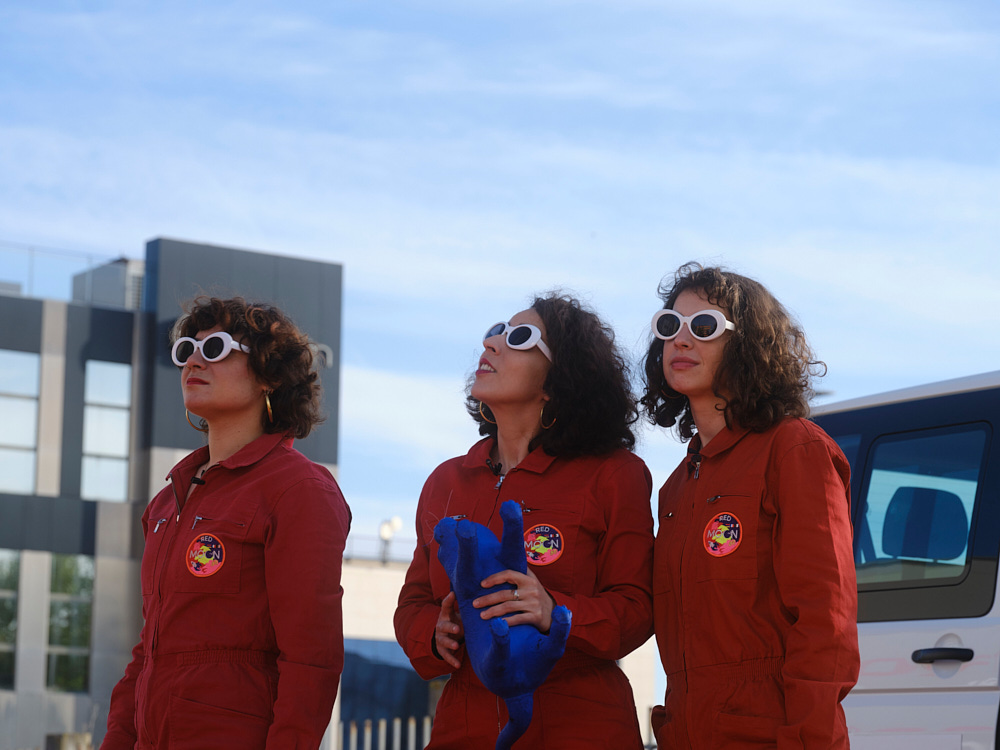
And this madness is certainly felt throughout Doppelgängers3. From a digitally enhanced, galaxy-decorated Schrödinger’s Cat sitting beside academic powerhouses like neurologist Dr Kári Stefánsson to a soundtrack from Russian activist/girl group, Pussy Riot, the project expands Ben Hayoun-Stépanian’s work on radical imagination. It reframes what we expect from the genre—this is not a regular space documentary, and the answers it uncovers are equally unconventional.
Perhaps this challenge to traditional ways of speaking about space exploration is owed to Ben Hayoun-Stépanian’s refusal to isolate humanity from science. Between interviews with scientists like quantum physicist Michio Kaku and astronomer Franck Marchis is a slate of surprising—but equally rich—cameos from activists like Armenian transgender activist Lilit Martirosyan, horror filmmaker Rémy Bennett, and Professor of Economics Dr Graciela Chichilnisky.
These less traditional interviews reframe intergalactic exploration on uniquely human terms. As planetary scientist Chris McKay puts it, the question of future life is “a deeply philosophical and in some sense transcendent question… wrapped up with value, economics, [and] motivation.” The answer to this question does not lie purely in scientific progress, but in a holistic, deliberate, and interdisciplinary vision.
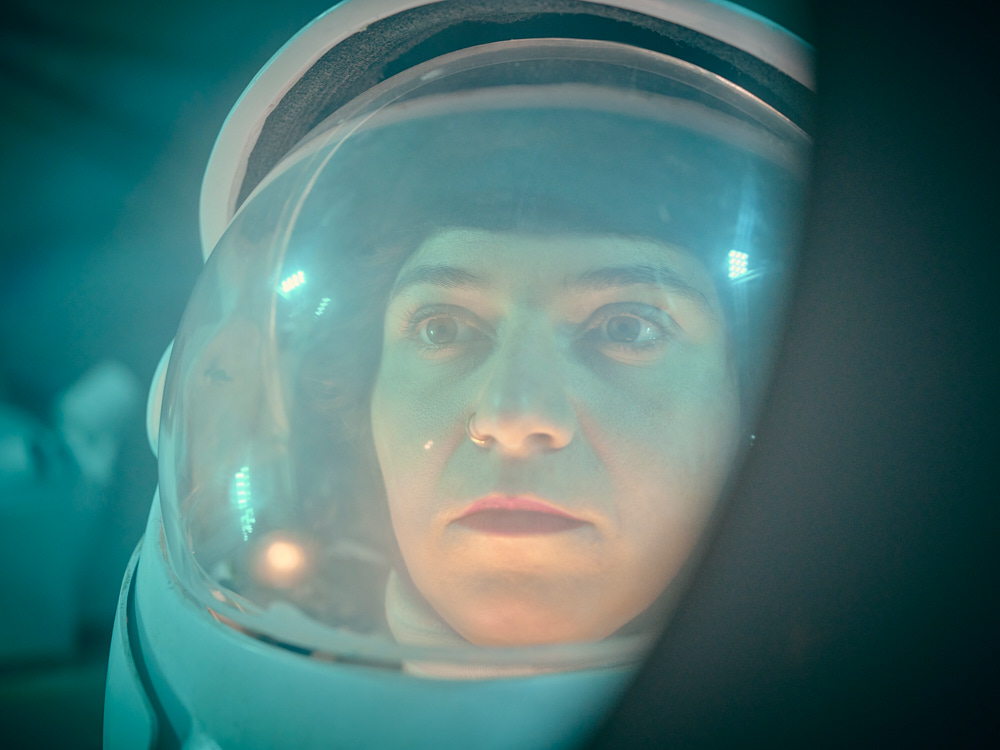
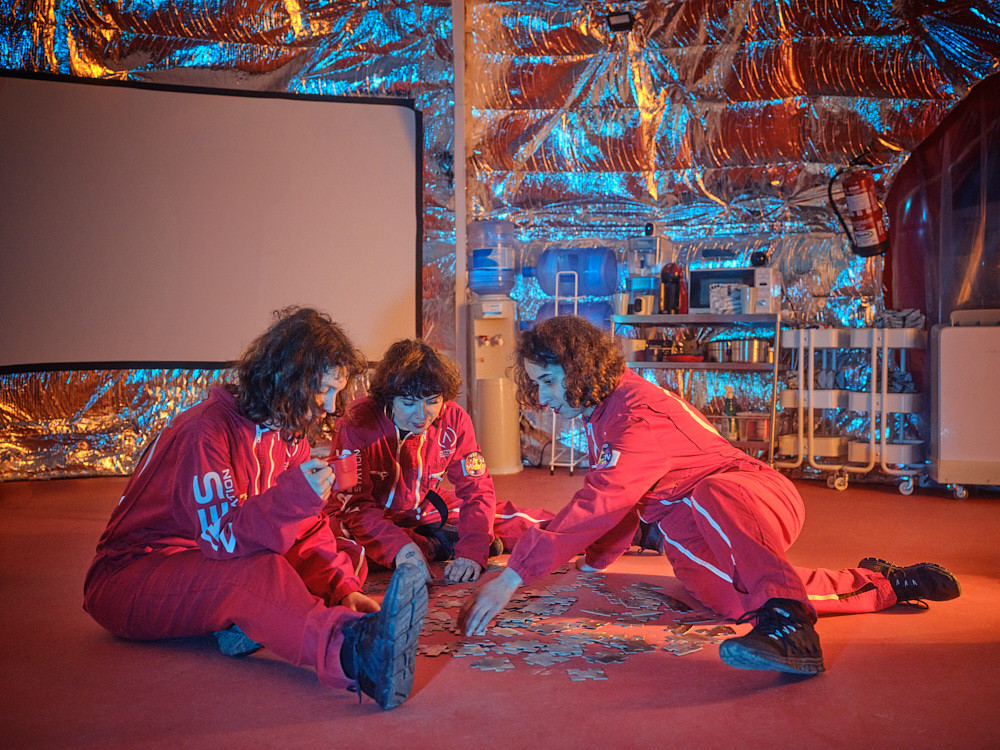
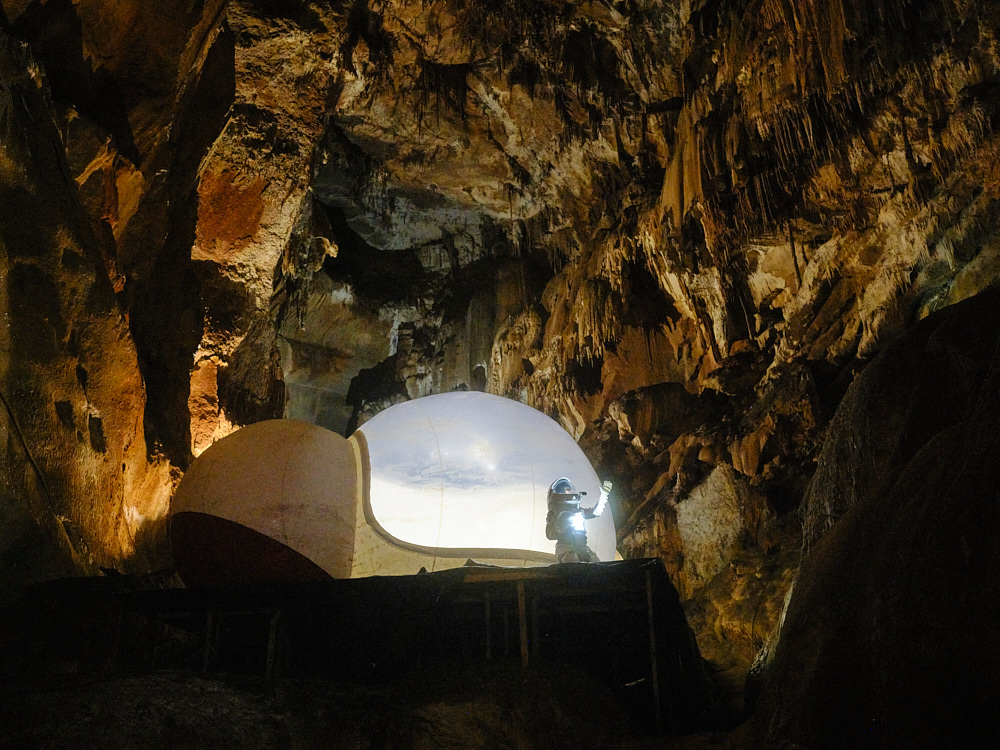
At this point, the reason for Ben Hayoun-Stépanian’s doppelgängers—DJ Lucia Kagramanyan and cultural producer Myriam Amroun—becomes clear. On the surface, they are fragments of the artist’s heritage, representations of her Algerian and Armenian roots. But on a deeper level, they embody national memories of humanity’s worst impulses, as well as their resistance to these struggles. From this more historically aware, culturally situated perspective, the central question in Doppelgangers3 becomes: How can past experiences of oppression and domination shape how we venture into space?
Enter the cave. At the Astroland Interplanetary Agency in Cantabria, the three doppelgangers venture underground to emulate what life would look like for early settlers on another planet. Here, as embodied selves connected to the pulse of human experience and the species’ collective memory, they are tasked with uncovering alternatives to intergalactic imperialism. They’re also given a few more practical goals. Can they find water down there? Can they find life?
What goes on, however, is something quite different—they go a little mad. Met with a lost connection to Mission Control, the psychological toll of claustrophobia, and a myriad of slips, falls, and accidents, they yield few concrete answers to their questions. The cave becomes not just a site for experimentation, but a stage for their psychological unravelling as the trio confront the limit of their capabilities.
This turn may appear slightly frustrating for those looking for a singular solution, and Ben Hayoun-Stépanian is clearly annoyed during the last thirty minutes of the film—she even complains that she couldn’t solve the moon-shaped puzzle they were working on at their base. But these very human struggles underscore the whole point of Doppelgängers3: to conceptualise new visions for space expansion, we must look inwards and face our own madness—as individuals and a species.
Doppelgängers3 premieres in the UK for SXSW London on 2 June. Tickets for the screening and Q&A are available at Rich Mix. Doppelgängers³ SXSW London UK Premiere in Screen Competition: Dress up and act the same as your friends for the chance to win a LomoApparat and Doppelgangers³ bundle.




